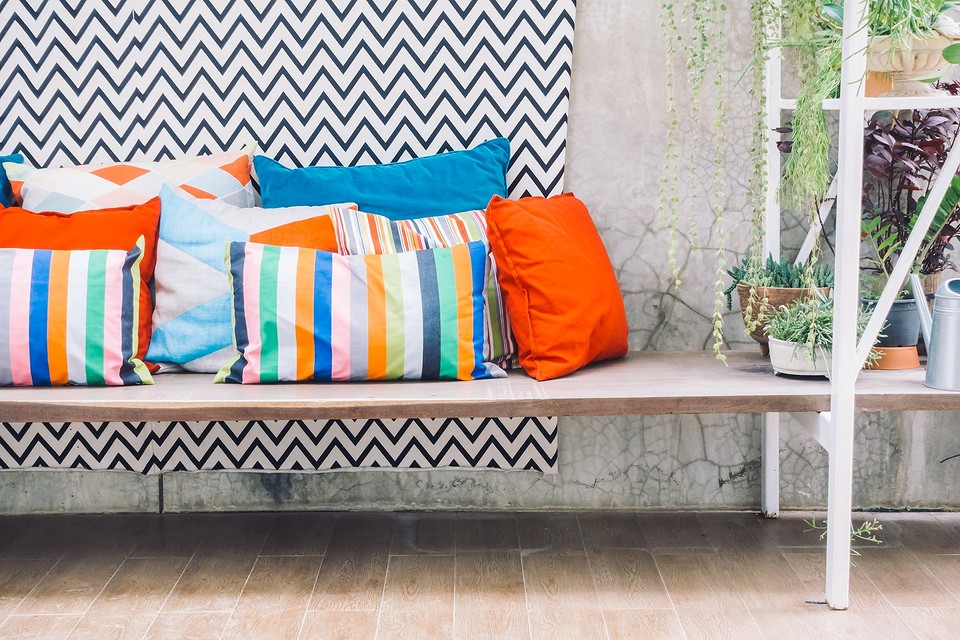Layering of Patterns
Patterns make an interior more interesting, but you must handle them with care. Never layer one over another. A bed with floral wallpaper behind the headboard and busy bedding in a diamond or bright checkered pattern is a bad idea. Stripes against a background of zigzags or polka dots are also a no-go. Several active patterns will clash and tire the viewer.

The Right Way
The principle is simple: only one item with a pattern. If you choose patterned wallpaper or graphic panels to highlight one wall, nothing too vibrant should be on that background. For example, in the living room, opt for a sofa in a neutral color with calm solid textiles, in the bedroom – a minimally decorated bed.



Too Many Textures
It’s thought that a variety of textures enhances an interior, and that’s true. But there shouldn’t be too many. Decorative brick, patterned floor tile, a small sofa, and wallpaper with a glossy pattern in one space (especially a small one) is definitely too much.

The Right Way
If a room already has many different textures, an accent wall is either unnecessary or should be more subdued and work through color. Alternatively, choose a texture similar to what’s already there but in a different shade. This could be two types of marble or two patterns from the same family.



Overused Techniques
Even if a wall is well chosen, an outdated method of creating an accent can ruin the whole impression. These include photo wallpapers with trite themes, garish patterns, cheap imitation brick, frescoes, and sometimes wooden slats.

The Right Way
Choose up-to-date materials and design techniques. If it’s wallpaper, then with a concise pattern that won’t get boring in a few years, or graphics, in the form of a stylized modern fresco. Also, panels of unusual shape, decorative lighting, volumetric tiles, or large seamless porcelain stoneware look interesting.



Focus on the TV Area
In a room with a TV, the focus is often on the wall behind it. But the problem is that the screen already has changing frames and colors, a constant flow of visual information. If the area around the screen has a very saturated color or – worse – a busy pattern, it will strain the eyes. Moreover, an active pattern can simply distract from what’s happening on the screen.

The Right Way
You can make an accent wall behind the TV, but then avoid bright colors and prints. Instead, use a textured finish in a neutral color or a decorative panel imitating some material. This way you create an accent, zone the space, and avoid going overboard.



No Connection with Other Elements
One of the main mistakes is making an accent for the sake of it, because it’s fashionable and that’s what interior blogs advise. It seems that without a bright spot, the room will be too boring, and so patterned wallpapers or panels appear, completely unrelated to the rest of the space.

How to Do It Right
Before choosing finishes, learn about the basic optical effects. For example, light colors visually expand the space, while dark colors conceal it. A surface with a warm shade appears closer, and a cool one seems farther away. Vertical lines elongate the walls upward, and horizontal lines extend them outward. Use what suits your specific room.








Leave feedback about this